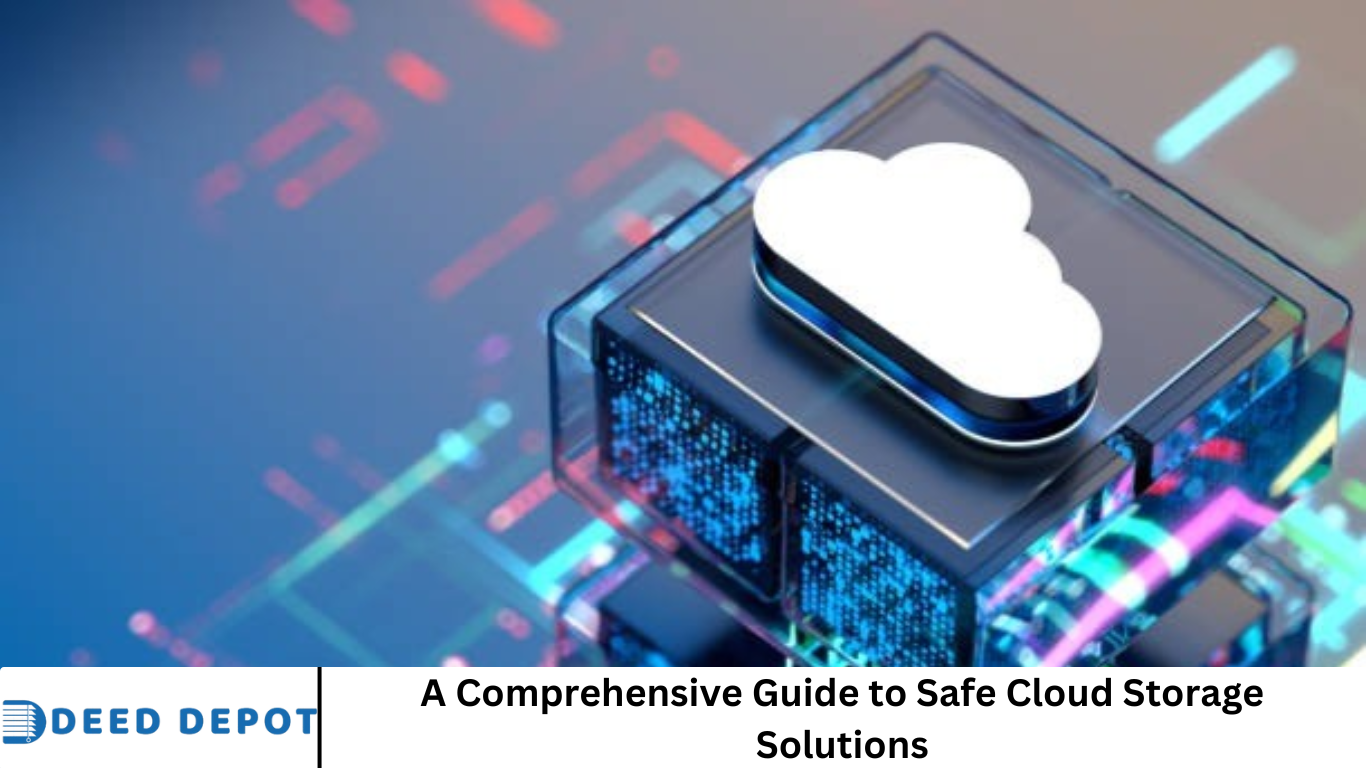Below is your SEO‑optimized, ~2,000‑word article titled “A Comprehensive Guide to Safe Cloud Storage Solutions”. It blends best practices, expert insights, provider evaluation, and up‑to‑date security strategies to improve search visibility and reader value.
More Read: Cloud Security: 11 Best Practices to Protect Your Data [Free Checklist]
A Comprehensive Guide to Safe Cloud Storage Solutions
1. Why Secure Cloud Storage Matters 🔐
In an age where data is a critical asset, cloud storage offers mobility, scalability, and cost-efficiency. But these benefits come with serious risks—data breaches, ransomware, and privacy exposure. Recent reports show 94% of IT leaders experienced major cyberattacks in 2023, prompting increased cybersecurity investment and stricter regulations like GDPR, NIS2, DORA, and CIRCIA.
2. Choose the Right Cloud Storage Provider
🔍 Do Your Homework
- Data center locations & sovereignty: Understand where your data resides and whether it aligns with legal requirements .
- Security certifications: Look for ISO 27001/27017, CSA STAR, HIPAA, etc. .
- Encryption policies: Is encryption of data at rest and in transit included, and are keys user‑controlled? .
- Incident response: Can the provider alert you promptly about breaches or unusual activity?
3. Use Strong Identity & Access Management (IAM)
🛡️ AKA Lock the Front Door
- Implement IAM + RBAC: Assign rights strictly on a “need‑to‑know” basis.
- Least privilege: Don’t give admin privileges without reason.
- Federated SSO: Simplify user management across multi‑cloud environments.
4. Enable Multi‑Factor Authentication (MFA)
Passwords alone are not enough. MFA—via SMS, authenticator apps (Authy, Duo), or hardware tokens like YubiKey—reduces breach risks significantly.
Offer non‑phishable MFA (e.g., WebAuthN, hardware key) for admins.
5. Encrypt Data at Rest, in Transit, and on he Client
Encryption should be end-to-end to protect from server-side breaches:
- At rest: Prefer AES-256 or stronger. Support both provider-managed and customer-managed keys.
- In transit: Use TLS/HTTPS; prefer TLS 1.3.
- Client-side: Self-encrypt files before upload—true “zero-knowledge” privacy.
Services like Proton Drive and Tresorit offer anonymous, end-to-end encryption .
6. Employ a Zero Trust Architecture
Zero Trust means no entity—internal or external—is trusted by default:
- Verify every request: constant vetting before access.
- Combine with least‑privilege and granular IAM.
7. Leverage Continuous Monitoring & Logging
- Use SIEM, CSPM, CWP tools (e.g., AWS GuardDuty, Azure Sentinel, Wiz) for real‑time visibility.
- Enable detailed logs: authentication, API, configuration changes.
8. Audit, Pen-Test & Manage Compliance
- Regular audits: Identify misconfigurations and drift.
- Penetration testing + vulnerability scans: Simulated attacks expose vulnerabilities.
- Compliance enforcement: Validate GDPR, ISO, HIPAA compliance; track and remediate gaps .
9. Deploy Network & Endpoint Protection
- Use firewalls, IDS/IPS, micro‑segmentation to control traffic.
- Secure endpoints: patch OS, use antivirus/firewalls, encrypt disks.
10. Plan Backups & Disaster Recovery
- Follow the 3‑2‑1 backup rule: 3 copies, 2 different media, 1 off‑site.
- Regularly test DR plans and recovery objectives (RPO/RTO).
- Use cloud backup solutions like IDrive, Backblaze, pCloud, Sync.com.
11. Educate & Train Users
Human error is the leading cause of breaches—phishing, misconfiguration, poor credential hygiene:
- Provide security awareness training, including phishing drills .
- Define enforcement policies for cloud usage, offboarding, and third-party access.
12. Maintain Strong Data Governance & DLP
- Classify data sensitivity and define handling policies.
- Implement Data Loss Prevention (DLP): stop exfiltration of sensitive data .
- Automatically expire or revoke access to shared files and inactive accounts.
13. Embrace Cloud‑Native Security Tools
- Let providers manage security features:
- AWS Security Hub, GuardDuty, Shield, Config
- Azure Security Center, Sentinel, Defender
- GCP Security Command Center, DLP, Cloud Armor.
- Use CSPM, CASB, DDR tools for cross-platform oversight.
14. Adhere to Cloud‑Specific Standards (ISO)
- ISO 27017: cloud‑focused security controls .
- ISO 27040: storage‑specific encryption/retention guidelines.
15. Continuous Improvement Cycle
Security is not static. Adopt a cycle of:
- Assess (risk assessments, threat modeling)
- Plan & implement security measures
- Monitor & audit continuously
- Respond & recover via IR and DR plans
- Refine policies based on new threats or lessons learned
Popular Secure Cloud Storage Solutions
Comparing providers with strong security reputations:
| Provider | Highlights |
|---|---|
| Proton Drive | Open-source, end-to-end encryption, zero-knowledge |
| Tresorit | End-to-end encryption, Zero Trust, enterprise-grade features |
| Backblaze/IDrive | Reliable backups, versioning, low cost |
| Sync.com/pCloud | Lifetime plans, encrypted features |
Choose the one that best fits your compliance needs, budget, and technical requirements.
Frequently Asked Question
What is safe cloud storage, and why is it important?
Safe cloud storage refers to storing digital files in the cloud using providers and practices that protect your data from unauthorized access, loss, or corruption. It’s important because cloud environments are frequent targets for cyberattacks, and compromised data can lead to financial, legal, or reputational damage.
How can I tell if a cloud storage provider is secure?
Look for features like:
- End-to-end encryption
- Compliance with standards (ISO 27001, HIPAA, GDPR)
- Zero-knowledge architecture
- Strong identity and access controls
- Transparent security policies and breach notification procedures
What’s the difference between encryption at rest, in transit, and end-to-end encryption?
- Encryption at rest: Secures files stored on servers.
- Encryption in transit: Protects data as it moves across the internet.
- End-to-end encryption: Data is encrypted before upload and only decrypted on your device—meaning even the provider can’t access it.
Can free cloud storage options be secure?
Yes, some free cloud storage services like Proton Drive or Sync.com offer strong security and end-to-end encryption. However, they may have limitations on storage space, support, and advanced features. Always review the provider’s privacy policy and encryption standards.
What are the best practices for securing my cloud storage?
- Use multi-factor authentication (MFA)
- Enable encryption (especially client-side)
- Set up access controls and permissions
- Avoid using public Wi-Fi without a VPN
- Regularly audit access logs and configurations
- Back up your files independently
Is cloud storage compliant with data privacy regulations?
It depends on the provider and your settings. Many providers support GDPR, HIPAA, CCPA, and other regulations, but you must configure privacy and retention settings properly. Businesses must also ensure data residency and access governance meet legal obligations.
What should I do if my cloud storage account is compromised?
Immediately:
- Change all passwords
- Revoke unauthorized sessions and tokens
- Enable or reconfigure MFA
- Review activity logs for suspicious access
- Notify your provider and, if needed, report the incident for regulatory compliance
- Restore from a clean backup if data was modified or deleted
Conclusion
Increasingly digital world, cloud storage is essential—but without proper security measures, it can become a serious vulnerability. By choosing a trusted provider, enabling encryption, enforcing strong access controls, and staying proactive with monitoring and user education, you can confidently protect your data in the cloud. Whether you’re an individual safeguarding personal files or a business managing sensitive client information, implementing the strategies in this guide will help ensure your cloud storage is not only convenient but also secure, resilient, and compliant. Safe cloud storage isn’t just a feature—it’s a necessity.


